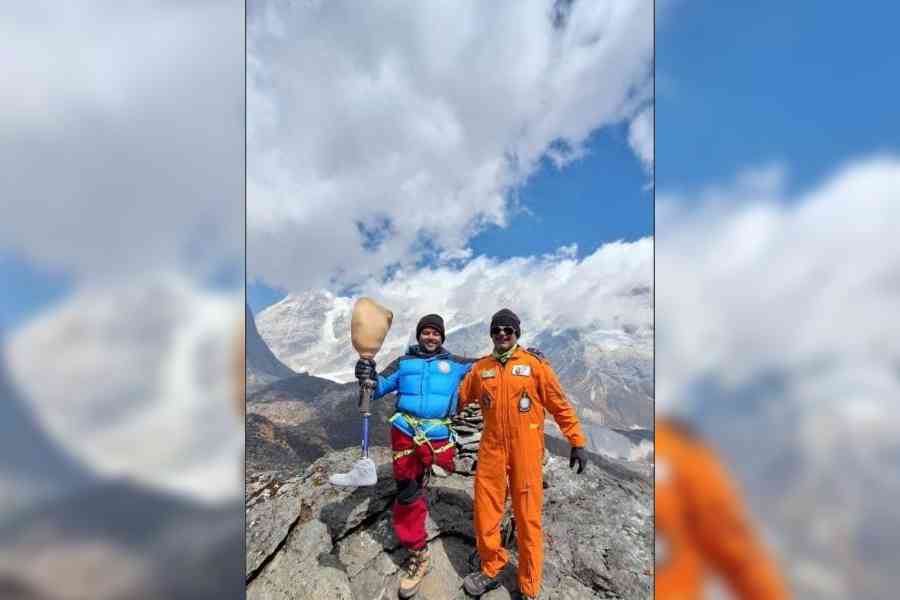As the Himalayan Mountaineering Institute (HMI) approaches its 70th anniversary in a few months, it is not only about scaling new heights in excellence but also about fostering inclusivity.
The institute started a campaign to encourage the physically-challenged people to join mountaineering.
One 36-year-old Uday Kumar from Calcutta, who had lost his left leg in a 2015 railway accident, climbed Mt. Renok at 16,500 feet in the Khangchendzonga National Park in March — with the support of HMI instructors. The expedition was led by Gp. Capt. JaiKishan, the principal of the HMI, and Kumar’s training and expenditure were sponsored by the HMI.
“Uday sustained all weights with his hands and negotiated the difficult terrains all along. We want to say if he can do it, anybody can do it. Adventure sports are for the divyangjan,” he said.
Currently, the institute has around 150 students in the mountains, with a special focus on encouraging women climbers.
One notable example is Neha Rai from Sikkim, who previously worked as a guide over there.
The HMI is also focussing on mountaineering education and safety.
For example, it has introduced lightweight equipment such as chest crawl, kong stretcher, the avalanche victim detector and some other equipment.
The avalanche victim detector (AVD) is also known as an avalanche transceiver. These are small, compact radios used to identify avalanche burial sites and they transmit electromagnetic signals that are picked up by another transceiver on the receive mode.
The AVD works in two modes — receiving and transmit or search mode, explained a trainee, Julian.
Similarly, a kong stretcher is made of durable and lightweight materials. With its help, it becomes easier for rescuers to act promptly in emergencies. This helps in secure and stable transport across difficult terrains — steep slopes or rocky surfaces.
It can be easily folded or strapped, facilitating rescuers to carry this without adding much weight to their load, she explained.
“With the help of these tools, it is now possible for a small rescue team of mountaineers to conduct a big rescue operation in high-altitude mountains,” said Rohit Sanga, another trainee at this institute.











